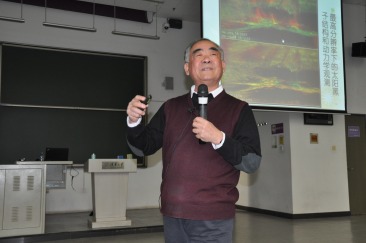The 24th “New Worlds, New Horizons” Public Astronomy Lecture took place at 6C300, the No. 6 Teaching Building (the Yuyuan Building) in Tsinghua University on Dec. 1st, 2018. It was delivered by Professor WANG Jingxiu, from the University of Chinese Academy of Sciences. It attracted a large audience on site and over 1000 online viewers via the Tencent News live broadcast.

Professor WANG Jingxiu is giving the lecture
Prof. Wang started his lecture about solar activities by introducing NASA’s Parker Solar Probe, the man-made object closest to Sun. Then he introduced sunspot and other solar activities, including eruptive prominence, solar flare and coronal mass ejections with many interesting videos. Prof. Wang pointed out that the magnetic field of the Sun is the driver of many different kinds of solar activities. After that, Prof. Wang raised our awareness of space weather by recalling some strong solar activities and their severe effects on the Earth’s history, and pointed out that the space weather affects our planet by changing the magnetic field of Earth, and its effects are global. At last, Prof. Wang showed the butterfly-shaped pattern of sunspots and mentioned the Maunder and Dalton Minima, two important periods in history. He showed the latest statistics of the sunspot number and predicted that we might be currently in a new minimum. Of course, whether this prediction is true or not requires further observations, and he stressed the importance of forcasts of solar activities.

A pupil is asking questions to Professor WANG after his lecture
Finally, Prof. Wang answered questions from university professors, students and children with different styles tailored at their levels.